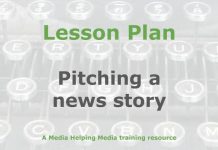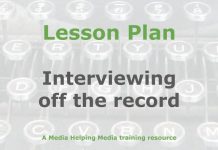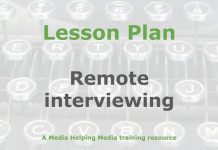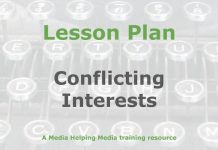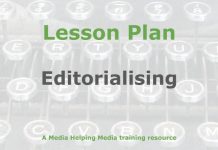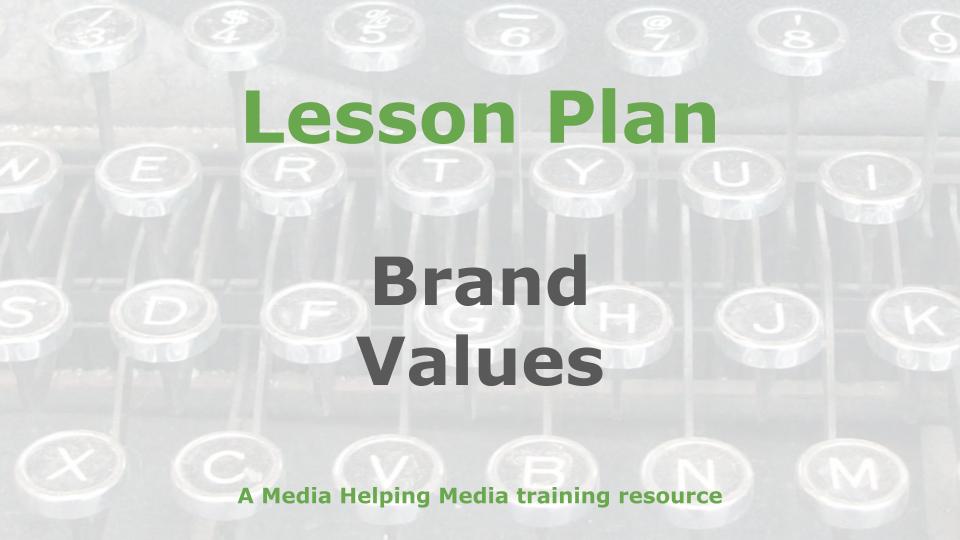 This lesson plan is designed to help participants understand the importance of brand values in news and how they apply to journalists.
This lesson plan is designed to help participants understand the importance of brand values in news and how they apply to journalists.
It’s based on the article ‘Brand values in news’ which we recommend trainers read before adapting this lesson plan for your own purposes.
Lesson plan: “Journalists as brand ambassadors: Understanding newsroom values and identity”
Audience: Journalism students
Duration: 6 hours (including breaks)
The following is a day-long lesson plan which includes lectures, discussions, reflection, and active learning. This outline is designed for journalism trainers to adapt for their own purposes. It is structured for a typical day of training (roughly six hours of class time, not counting lunch and short breaks).
Learning objectives
By the end of the session, students will:
- Understand the concept of brand values in news organisations.
- Recognise the journalist’s role as a representative of brand identity.
- Explore the tension between personal branding and institutional branding.
- Reflect on ethical decision-making under pressure.
- Analyse real-world examples of news brands and their editorial values.
Lesson outline
09:00 – 09:30 | Welcome & icebreaker
- Activity: “What is a brand?” — quick brainstorm (individual post-its or digital board).
- Students write down what comes to mind when they hear “brand” (general and media-specific).
- Group discussion: How do we feel about brands? Trust, identity, loyalty?
09:30 – 10:15 | Lecture: The concept of news brands
- Origins of branding in journalism.
- From tangible products to intangible values.
- The brand as an “idea” rather than a physical entity.
- Slide examples: NYT, BBC, CNN brand values.
10:15 – 10:30 | Break
10:30 – 11:15 | Group activity: Decoding news brands
- Task: Split into small groups.
- Each group analyses one major news organisation:
- What values do they promote?
- How are these reflected in their reporting, tone, visuals?
- Compare subtle differences between NYT, BBC, CNN, etc.
- Output: Prepare a short presentation or visual map of the brand identity.
11:15 – 12:00 | Discussion: The journalist as brand ambassador
- Explore the idea of journalists embodying their news brand.
- Challenges under deadline pressure.
- Discussion prompts:
- Can you think of a time when a journalist’s actions either reinforced or harmed their brand?
- What pressures might tempt a journalist to stray from brand values?
- Reference: Daily Express editor’s quote about sincerity and resilience (see ‘Brand values in news‘).
12:00 – 13:00 | Lunch
13:00 – 13:45 | Case study: Ethics under pressure
- Real-world scenarios:
- Students work in pairs or groups to tackle dilemmas (e.g., accuracy vs. speed, sensationalism vs. integrity).
- Resources:
- Debrief: How do brand values guide decisions? How might personal branding pressures complicate this?
13:45 – 14:30 | Lecture + discussion: Personal branding vs institutional branding
- Rise of personal branding in journalism.
- Benefits and risks: autonomy, reach, blurred lines.
- Generational shifts: veterans and digital natives.
- Discussion: How do you build a personal brand that aligns with an employer’s values?
14:30 – 14:45 | Break
14:45 – 15:30 | Reflective writing
- Prompt: “As a future journalist, how will I balance my personal identity with my responsibility to my news organisation’s brand?”
- Quiet individual time to write.
- Optional: invite a few volunteers to share insights.
15:30 – 16:15 | Group work: “Our newsroom’s brand”
- In groups, invent a new news organisation.
- Define:
- Core values.
- Target audience.
- Visual identity (quick sketches/keywords).
- Journalists conduct guidelines.
- Each group presents their “news brand” to the class.
16:15 – 16:30 | Wrap-up & takeaways
- Recap key lessons.
- Open floor: final reflections or lingering questions.
- Share reading list for further exploration (optional homework).
Materials needed
- Whiteboard or digital equivalent.
- Printed handouts or slides: values of major news organisations.
- Case study scenarios (can be printed or displayed).
- Paper or devices for reflective writing.
Optional extension
- Homework/project:
Students write a blog post or record a short video: “What does my personal journalistic brand look like, and how will I protect it while respecting my future employer’s brand?”

